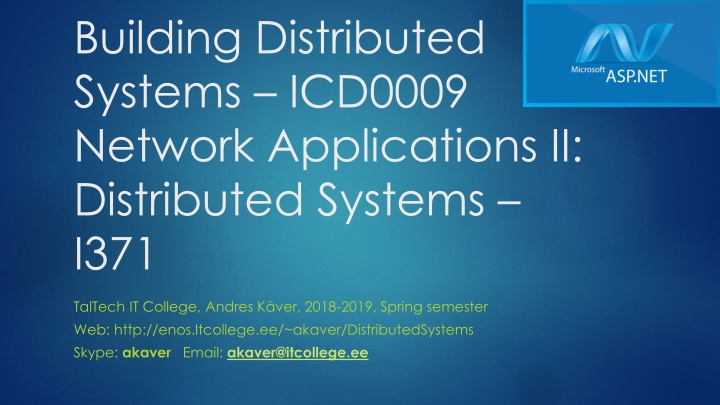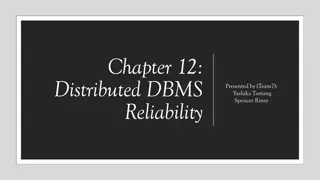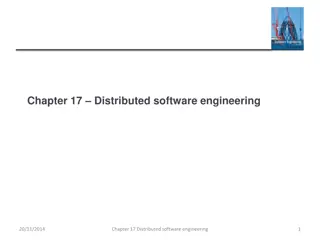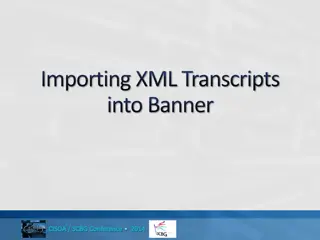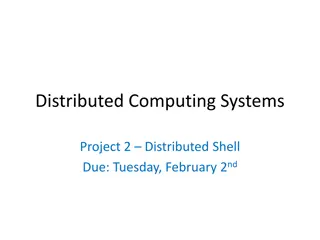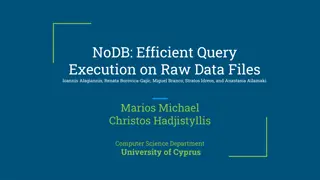EF Querying and Loading in Distributed Systems
Entity Framework (EF) simplifies querying data in distributed systems using LINQ while providing options for eager and explicit loading. Dive into efficient data retrieval methods and learn about lazy loading in EF Core.
Download Presentation

Please find below an Image/Link to download the presentation.
The content on the website is provided AS IS for your information and personal use only. It may not be sold, licensed, or shared on other websites without obtaining consent from the author.If you encounter any issues during the download, it is possible that the publisher has removed the file from their server.
You are allowed to download the files provided on this website for personal or commercial use, subject to the condition that they are used lawfully. All files are the property of their respective owners.
The content on the website is provided AS IS for your information and personal use only. It may not be sold, licensed, or shared on other websites without obtaining consent from the author.
E N D
Presentation Transcript
Building Distributed Systems ICD0009 Network Applications II: Distributed Systems I371 TalTech IT College, Andres K ver, 2018-2019, Spring semester Web: http://enos.Itcollege.ee/~akaver/DistributedSystems Skype: akaver Email: akaver@itcollege.ee
EF Querying data 1 Entity Framework Core uses Language Integrated Query (LINQ) to query data from the database. LINQ allows you to use C# (or your .NET language of choice) to write strongly typed queries based on your derived context and entity classes. A representation of the LINQ query is passed to the database provider, to be translated in database-specific query language (for example, SQL for a relational database).
EF Query Basics 2 var persons = context.Persons.ToList(); var person = context.Persons .Single(p => p.PersonId == 1); var persons = context.Persons .Where(b => b.FirstName.Contains( ndres")) .ToList(); Linq lecture upcoming .
EF Loading related data 3 Eager loading (joins) Include and ThenInclude Include always starts from the top of the graph You can go several levels down with more ThenIncludes var persons = context.Persons .Include(p => p.Contacts) .ThenInclude(c => c.ContactType) .ThenInclude(ct => ct.Image) .Include(p => p.MetaData) .ThenInclude(m => m.Photo) .ToList();
EF Loading related data 4 Explicit loading You can explicitly load a navigation property via the DbContext.Entry(...) API context.Entry(person).Collection(p => p.Contacts).Load(); context.Entry(contact).Reference(c => c.ContactType).Load();
EF - Loading related data 5 Querying related entities You can also get a LINQ query that represents the contents of a navigation property. This allows you to do things such as running an aggregate operator over the related entities without loading them into memory. var person = context.Persons .Single(p => p.PersonId == 1); var skypeContacts = context.Entry(person) .Collection(b => b.Contacts) .Query() .Where(c => c.ContactType.Name == Skype ) .ToList();
EF Lazy Loading 6 NO! Just NO!
EF Lazy Loading 7 Install Microsoft.EntityFrameworkCore.Proxies package .AddDbContext<BloggingContext> ( b => b.UseLazyLoadingProxies() .UseSqlServer(myConnectionString)); EF Core will then enable lazy loading for any navigation property that can be overridden--that is, it must be virtual and on a class that can be inherited from (not sealed).
EF Tracking vs No-Tracking 8 Tracking behavior controls whether or not Entity Framework Core will keep information about an entity instance in its change tracker. If an entity is tracked, any changes detected in the entity will be persisted to the database during SaveChanges(). Entity Framework Core will also fix-up navigation properties between entities that are obtained from a tracking query and entities that were previously loaded into the DbContext instance. No tracking queries are useful when the results are used in a read- only scenario. They are quicker to execute because there is no need to setup change tracking information. var persons = context.Persons.AsNoTracking().ToList();
EF Raw SQL queries 9 You can use the FromSql extension method to begin a LINQ query based on a raw SQL query. var persons = context.Persons .FromSql("SELECT * FROM Persons") .ToList(); var persons = context.Persons .FromSql("SELECT * FROM Persons WHERE FirstName LIKE %{0}% , username) .ToList(); var persons = context.Persons .FromSql($"SELECT * FROM Persons WHERE FirstName LIKE %{username}% ") .ToList();
EF - Raw SQL queries 10 Composing with LINQ If the SQL query can be composed on in the database, then you can compose on top of the initial raw SQL query using LINQ operators. SQL queries that can be composed on begin with the SELECT keyword. Change Tracking As usual Including related data As usual
EF Async operations 11 Asynchronous operations avoid blocking a thread while the query is executed in the database. This can be useful to avoid freezing the UI of a thick-client application. Asynchronous operations can also increase throughput in a web application, where the thread can be freed up to service other requests while the database operation completes. EF Core does not support multiple parallel operations being run on the same context instance. You should always wait for an operation to complete before beginning the next operation. This is typically done by using the await keyword on each asynchronous operation.
EF Global Query Filters 12 Global query filters are LINQ query predicates (a boolean expression typically passed to the LINQ Where query operator) applied to Entity Types in the metadata model (usually in OnModelCreating). Such filters are automatically applied to any LINQ queries involving those Entity Types, including Entity Types referenced indirectly, such as through the use of Include or direct navigation property references. Soft-delete modelBuilder.Entity<Person>().HasQueryFilter(p => !p.IsDeleted); Disabling filters var persons = db.Persons .Include(p => p.Contacts).IgnoreQueryFilters() .ToList();
EF - 14
